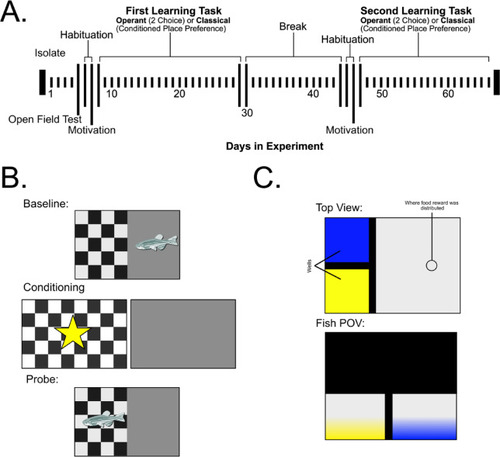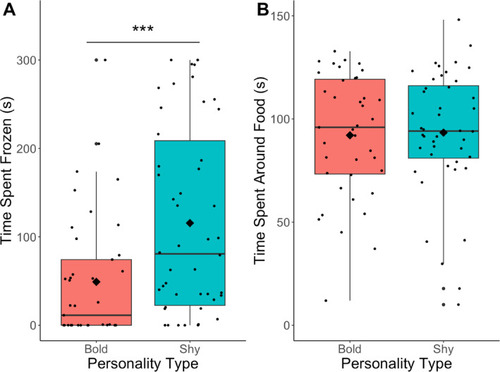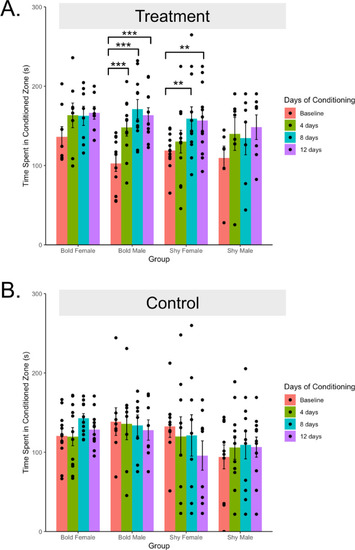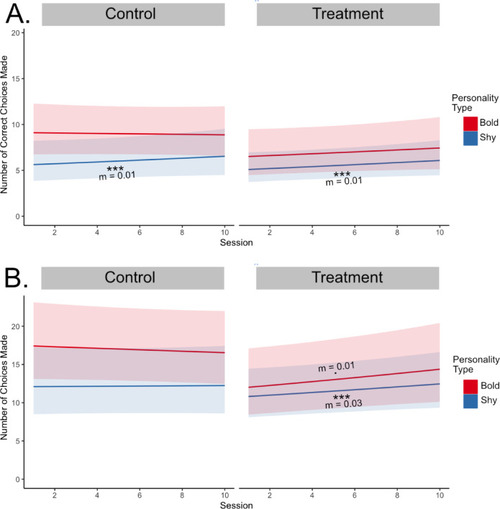- Title
-
Bold zebrafish (Danio rerio) learn faster in a classical associative learning task
- Authors
- Corcoran, J., Storks, L., Wong, R.Y.
- Source
- Full text @ Sci. Rep.
|
Overview of Experiment Timeline and Tasks. ( |
|
( |
|
Time spent in the conditioned zone by group and day of conditioning in the CPP. ( |
|
Regression lines of the number of choices made and number of correct choices made by personality type and treatment. ( |




